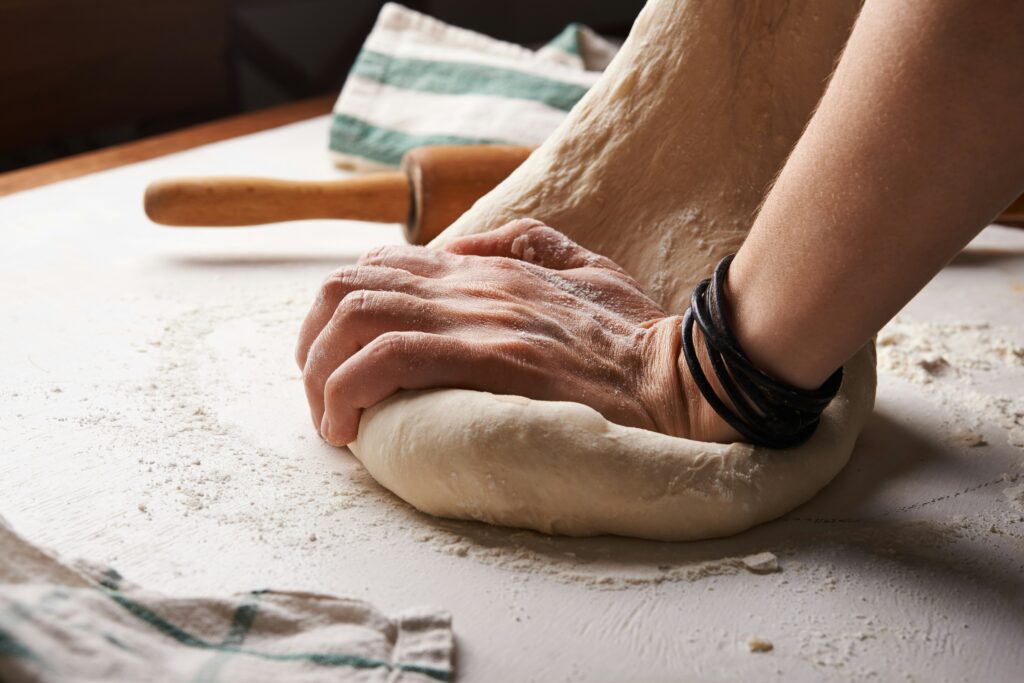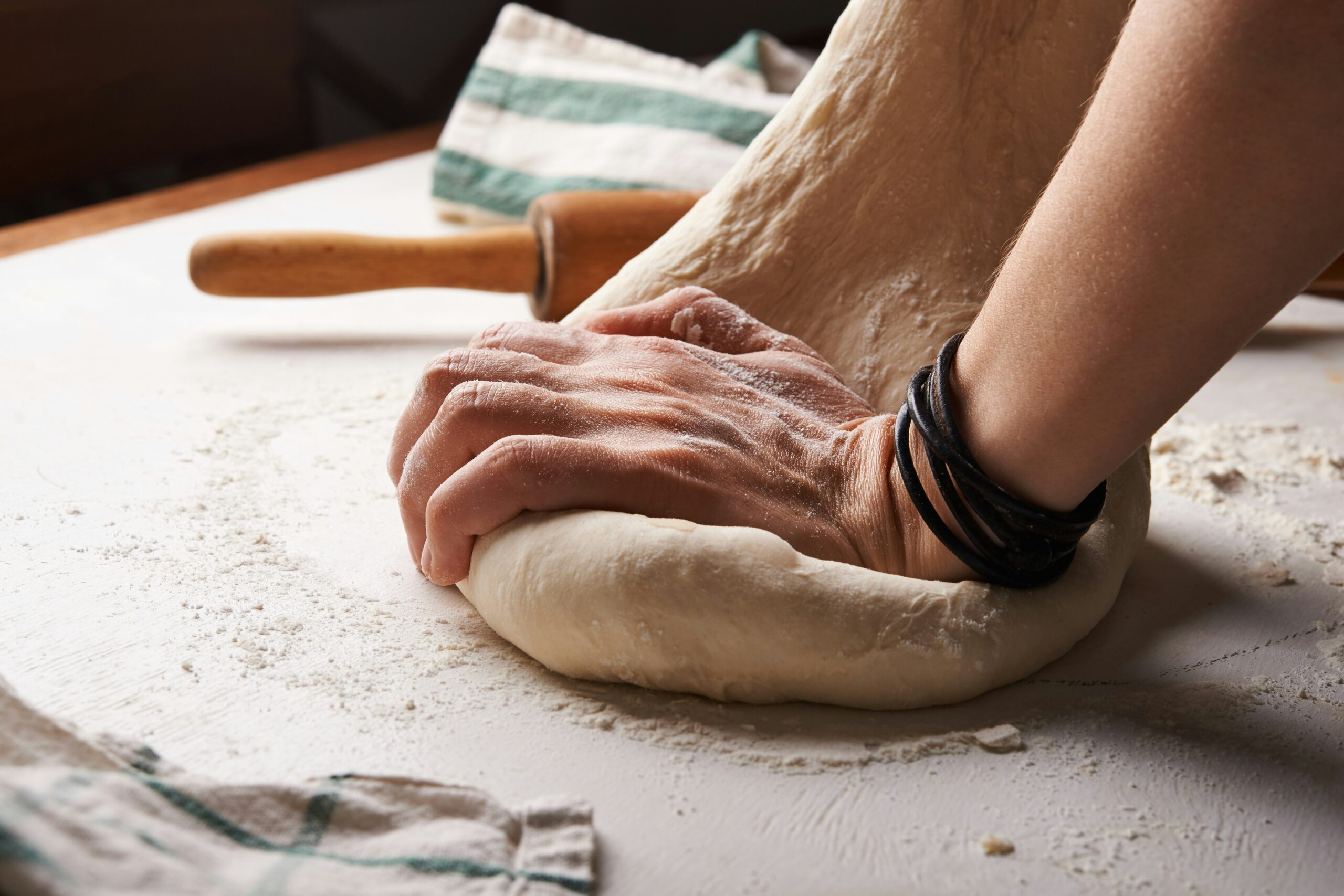Layering a pizza may seem simple, but doing it correctly can significantly improve the taste, texture, and overall enjoyment of the pizza. Whether you’re a home cook or an aspiring pizza maker, understanding the correct order and method of layering ingredients is essential for a perfect pizza. The order affects how the crust bakes, how the toppings cook, and how the flavors blend. Here’s a detailed guide on how to layer a pizza correctly for the best results.

Step 1: Start with a Good Pizza Dough
The foundation of any pizza is the dough. A well-made dough will be light, airy, and crispy at the edges while remaining tender in the middle.
- Making the Dough: A basic pizza dough consists of flour, water, yeast, salt, and olive oil. Mix the ingredients, knead until smooth, and allow it to rise for a couple of hours until it doubles in size.
- Shaping the Dough: Once risen, roll or stretch the dough to your desired thickness. For a classic pizza, aim for a thin, round shape with a slightly thicker edge for a crust.
Now that your dough is ready, it’s time to start layering your pizza.
Step 2: Apply the Sauce Evenly
The sauce acts as the base layer for your pizza and provides moisture and flavor. There are different types of pizza sauces you can use, from a classic tomato sauce to white sauces or even pesto.
- Tomato Sauce: This is the most common choice, made from crushed tomatoes, garlic, olive oil, and herbs. Spread the sauce evenly over the pizza dough using the back of a spoon or a spatula.
- Amount: Don’t overdo it—about 1/4 to 1/2 cup of sauce should be enough for a standard 12-inch pizza. Too much sauce can make the dough soggy.
- Distribution: Spread the sauce evenly over the base, leaving about an inch around the edges for the crust. Make sure the sauce is not too thick or thin in any area for even cooking.
Step 3: Add Cheese for a Melty Base Layer
Cheese is crucial for pizza and usually comes after the sauce. It forms a melty, gooey layer that helps hold the toppings together.
- Types of Cheese: Mozzarella is the classic pizza cheese, prized for its meltability and mild flavor. You can also mix in other cheeses like cheddar, provolone, or parmesan for added flavor.
- Amount: Use about 1 to 1.5 cups of shredded mozzarella for a 12-inch pizza. If you’re using fresh mozzarella, slice it thinly to avoid excess moisture.
- Distribution: Spread the cheese evenly over the sauce, covering it without making the layer too thick. You want to see some of the sauce peeking through the cheese layer.
Tip: If you’re making a pizza with a lot of toppings, you may want to reserve some cheese to sprinkle on top of the toppings later. This ensures they stick to the pizza and get a nice golden-brown finish.
Step 4: Add Protein and Heavier Toppings
Heavier toppings, such as meats and proteins, should come next. These include pepperoni, sausage, ham, bacon, chicken, or anchovies. Since these toppings take longer to cook, placing them under lighter toppings ensures even cooking and prevents them from drying out.
- Pre-Cooking: If using raw meats like sausage or chicken, pre-cook them before adding them to the pizza. Pizza doesn’t cook long enough to fully cook raw meats, and this step ensures they are safe to eat.
- Distribution: Place the heavier toppings evenly across the pizza. Avoid piling too much in one area, as this could make the pizza soggy or unevenly cooked.
- Quantity: Less is more when it comes to proteins. Too many heavy toppings can weigh down the pizza and affect the texture.
Step 5: Layer Vegetables and Lighter Toppings
After the protein, add vegetables and lighter toppings like mushrooms, onions, bell peppers, olives, or spinach. These cook faster and should be layered on top to prevent sogginess and ensure they get roasted.
- Cut Uniformly: Slice vegetables thinly and uniformly so they cook evenly. Large chunks of vegetables may release too much moisture, making the pizza soggy.
- Distribution: Scatter the vegetables evenly over the pizza for balanced bites. Try not to overload the pizza with too many toppings; aim for a good mix of colors and textures.
Tip: Some vegetables like spinach or arugula can be added raw after baking for a fresh, crisp element.
Step 6: Optional: Finish with Extra Cheese or Herbs
After layering your toppings, you can finish with a sprinkling of extra cheese or herbs like basil or oregano. A second layer of cheese on top helps bind the toppings together and creates a golden, crispy surface when baked.
- Cheese: Lightly sprinkle more mozzarella, parmesan, or provolone over the toppings if desired. Just be careful not to overdo it, as too much cheese can make the pizza greasy.
- Herbs: Fresh herbs like basil can be added after baking, while dried herbs like oregano or thyme can be added before baking to enhance the flavor.
Step 7: Bake the Pizza
Once your pizza is properly layered, it’s time to bake it to perfection.
- Oven Temperature: Preheat your oven to the highest setting, usually between 475°F to 500°F (250°C to 260°C). A hot oven ensures a crispy crust and fully cooked toppings.
- Baking Surface: If you have a pizza stone, preheat it along with the oven. The stone helps cook the pizza evenly and gives it a crispy base. Alternatively, use a baking sheet if you don’t have a pizza stone.
- Baking Time: Bake the pizza for about 10 to 15 minutes or until the crust is golden brown and the cheese is bubbling and slightly browned.
Step 8: Slice and Serve
Once your pizza is done, remove it from the oven and let it cool for a minute or two before slicing. Use a pizza cutter or sharp knife to cut it into even slices.
- Garnishes: Add any final touches, such as fresh basil, a drizzle of olive oil, or crushed red pepper flakes, before serving.
Conclusion
Layering a pizza correctly ensures that every bite has the right balance of flavors, textures, and ingredients. From spreading the sauce and cheese evenly to adding the right amount of toppings, following these steps will give you a perfect homemade pizza every time. With a little practice and attention to detail, you can create delicious pizzas that rival your favorite pizzeria!
